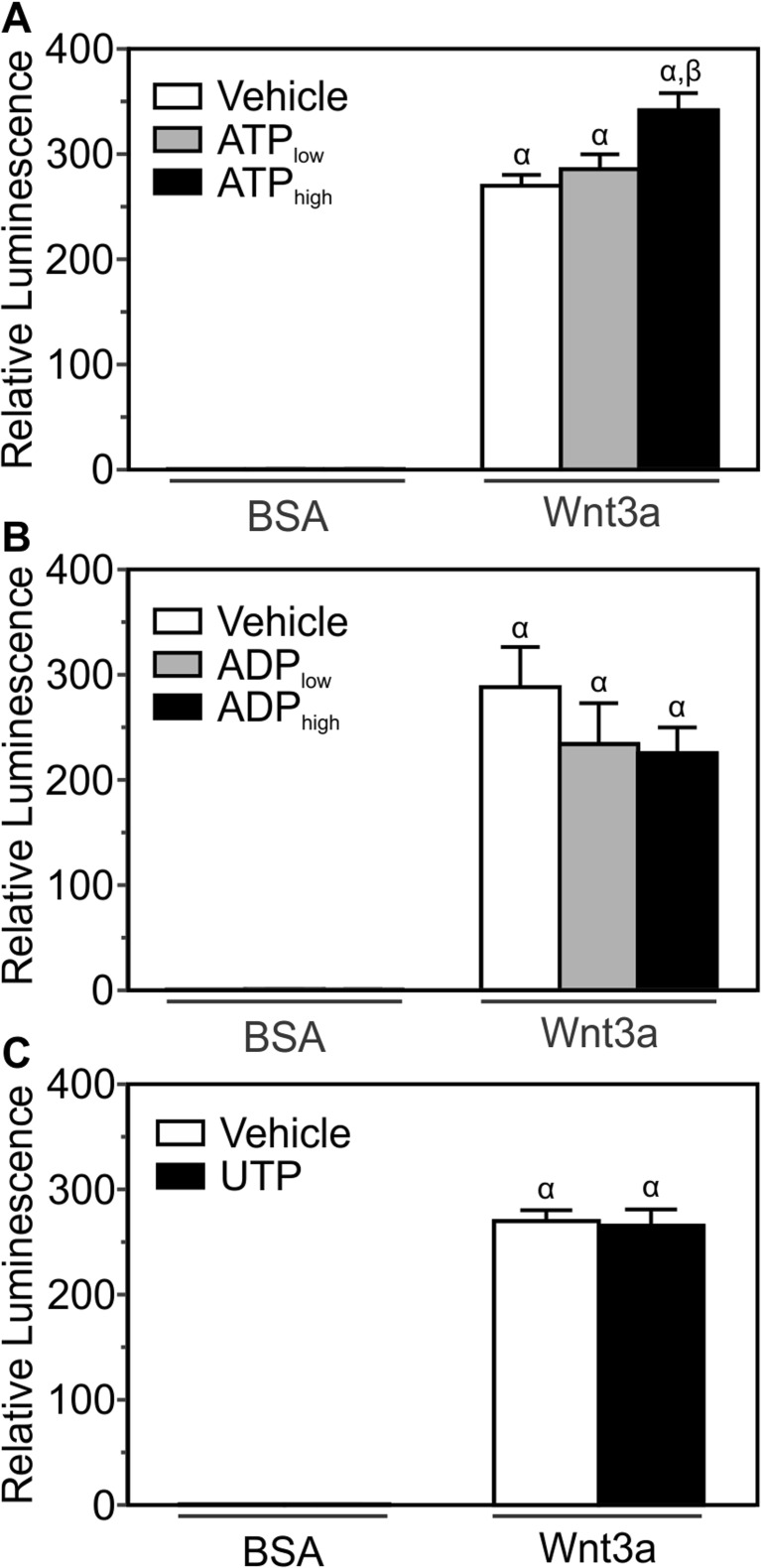Fig. 3.
P2X7 receptor agonists potentiate β-catenin transcriptional activity elicited by Wnt3a. MC3T3-E1 osteoblast-like cells transfected with the β-catenin luciferase reporter plasmid were treated under serum-free conditions. a Cells were treated with recombinant mouse Wnt3a (20 ng/ml) or its vehicle (0.2 % BSA; BSA) in the presence of either 10 μM ATP (ATP low), 1 mM ATP (ATP high), or their vehicle (Vehicle). After 24 h, cell lysates were collected and luminescence was assessed. Luminescence for each treatment was expressed relative to BSA + Vehicle. b Cells were treated with recombinant canonical Wnt3a (20 ng/ml) or its vehicle (0.2 % BSA; BSA) in the presence of either 10 μM ADP (ADP low), 1 mM ADP (ADP high) or their vehicle (Vehicle). After 24 h, luminescence was assessed as described in a. c Cells were treated with recombinant canonical Wnt3a (20 ng/ml) or its vehicle (0.2 % BSA; BSA) in the presence of either 10 μM UTP (UTP) or its vehicle (Vehicle). After 24 h, luminescence was assessed as described in a. For a, b, and c, there was no effect of nucleotide treatment alone on transcriptional activity. α indicates a significant effect of treatment on β-catenin transcriptional activity compared to BSA + Vehicle (p < 0.05). β indicates significant effect of nucleotide on Wnt3a-induced β-catenin transcriptional activity (p < 0.05). Data are means ± SEM (n = 9-21 samples from three-to-seven independent experiments)

